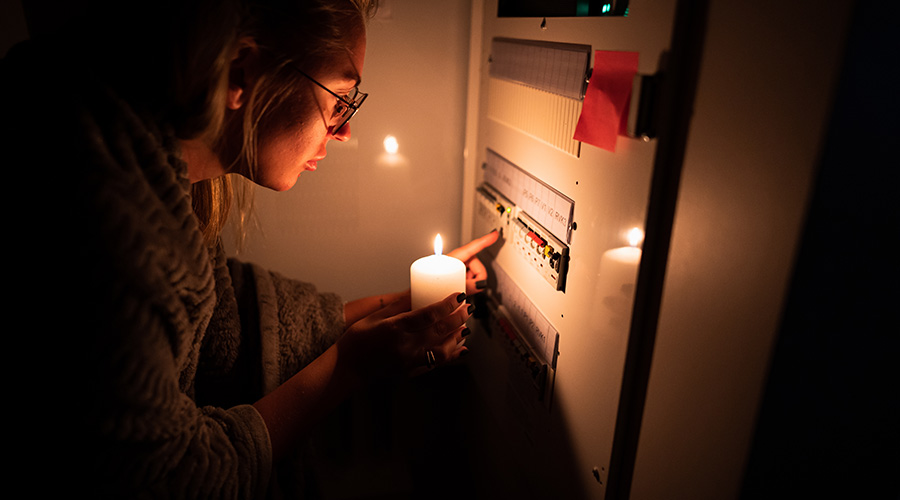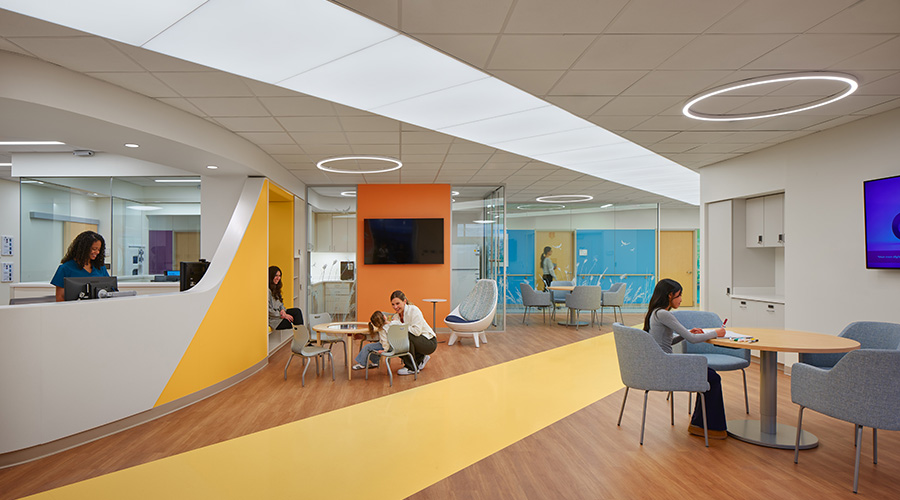As demographics shift, hospitals are faced with having to provide for multiple patient populations in the same space. For example, Saint Mary's Health Care in Grand Rapids, Mich., discussed in a Behavioral Health Care article, did not have enough resources to provide separate psychiatric-medical units for its adult and geriatric patients. But as the geriatric patients have recently become more numerous, a solution for both populations in the same space had to be found.
A geriatric psychiatric patient has more specialized needs than someone between 18 and 50. Access to daylight, while helpful for all patients, is especially beneficial for geriatric patients in maintaining healthy circadian rhythms and being able to tell time of day, says the article.
Finishes such as wood tones should be used so geriatric patients feel more at home in the space, but care should be taken with flooring colors, as dark areas can be interpreted as holes. Floors also need to guard against slips and have no or very low transitions to avoid tripping hazards.
As either the psychiatric patient or the geriatric patient can get easily confused, the design at Saint Mary's accommodated both by using high contrasting colors to help with wayfinding, while using similar tones to discourage patients from going into areas where they shouldn't go by effectively camouflaging those doors within the wall color. On a similar note, acrylic panels featuring clouds provide an engaging visual while helping patients figure out which way is up.
As geriatric patients can get chilled more quickly and spend a longer time sitting, the design incorporates heated massage chairs in the common space. The chairs had to make it easy to get into and out of them while not creating uncomfortable pressure points.
In the bedrooms, the bathrooms are easily visible from the beds — a feature with the geriatric patient in mind — while privacy curtains with anti-ligature features take the place of a conventional door. To compromise between the ligature hazard of a conventional hospital bed and medical treatment needs, the unit uses medical psychiatric beds.
Read the article.
Read the chair selection sidebar.

 Contaminants Under Foot: A Closer Look at Patient Room Floors
Contaminants Under Foot: A Closer Look at Patient Room Floors Power Outages Largely Driven by Extreme Weather Events
Power Outages Largely Driven by Extreme Weather Events Nemours Children's Health Opens New Moseley Foundation Institute Hospital
Nemours Children's Health Opens New Moseley Foundation Institute Hospital Code Compliance Isn't Enough for Healthcare Resilience
Code Compliance Isn't Enough for Healthcare Resilience Ribbon Cutting Marks First Phase Completion for New Montefiore Einstein Facility
Ribbon Cutting Marks First Phase Completion for New Montefiore Einstein Facility